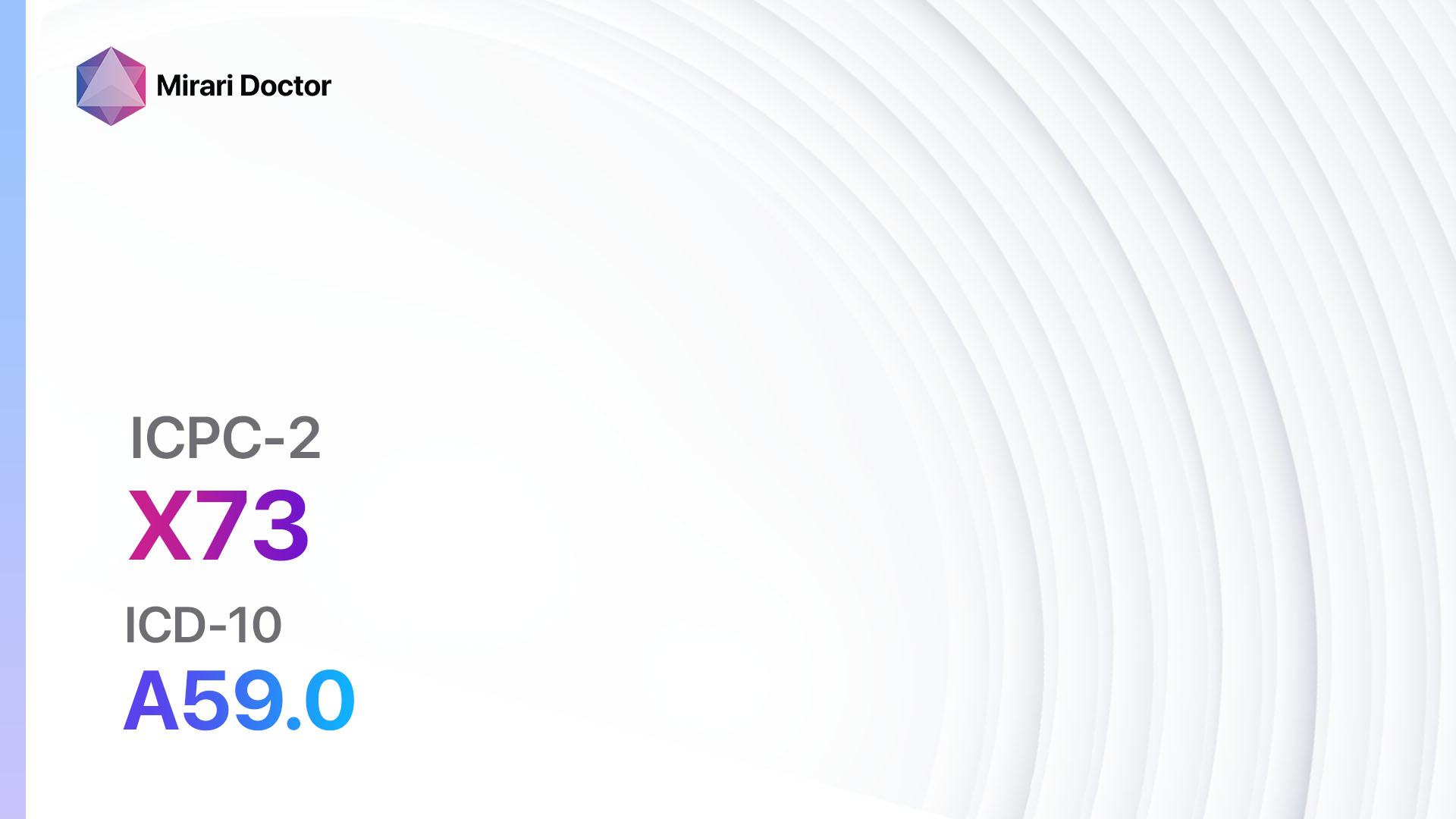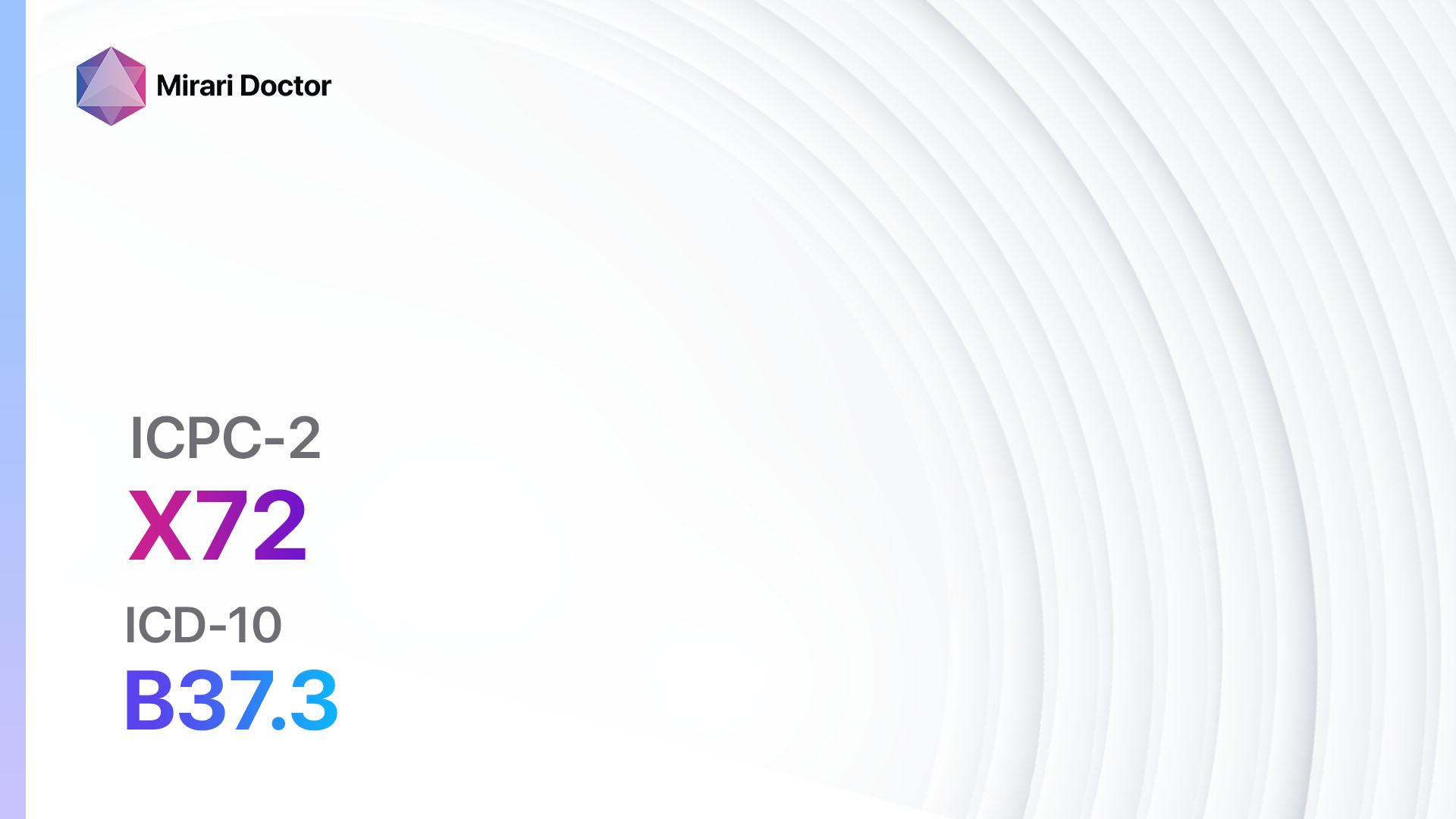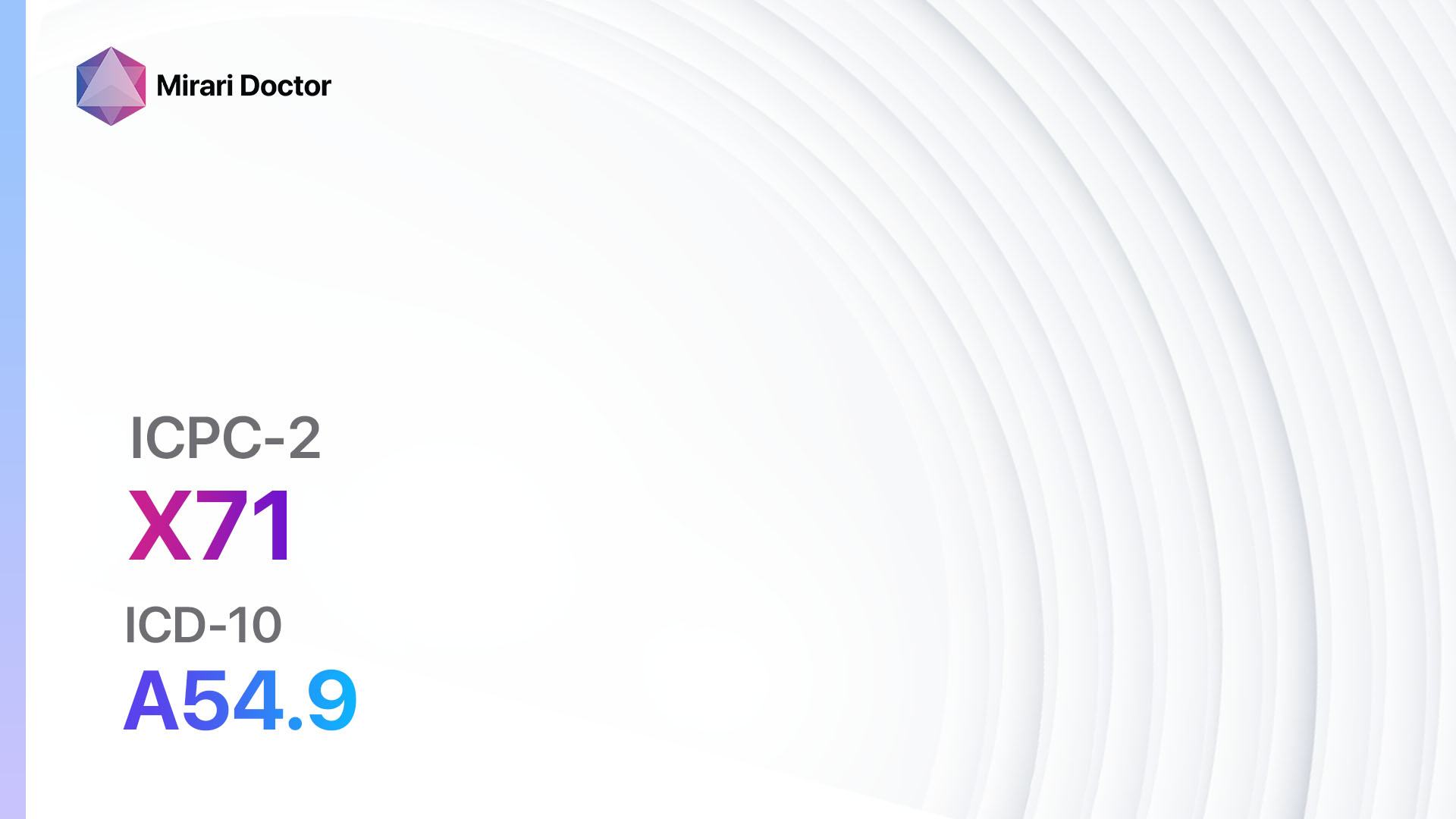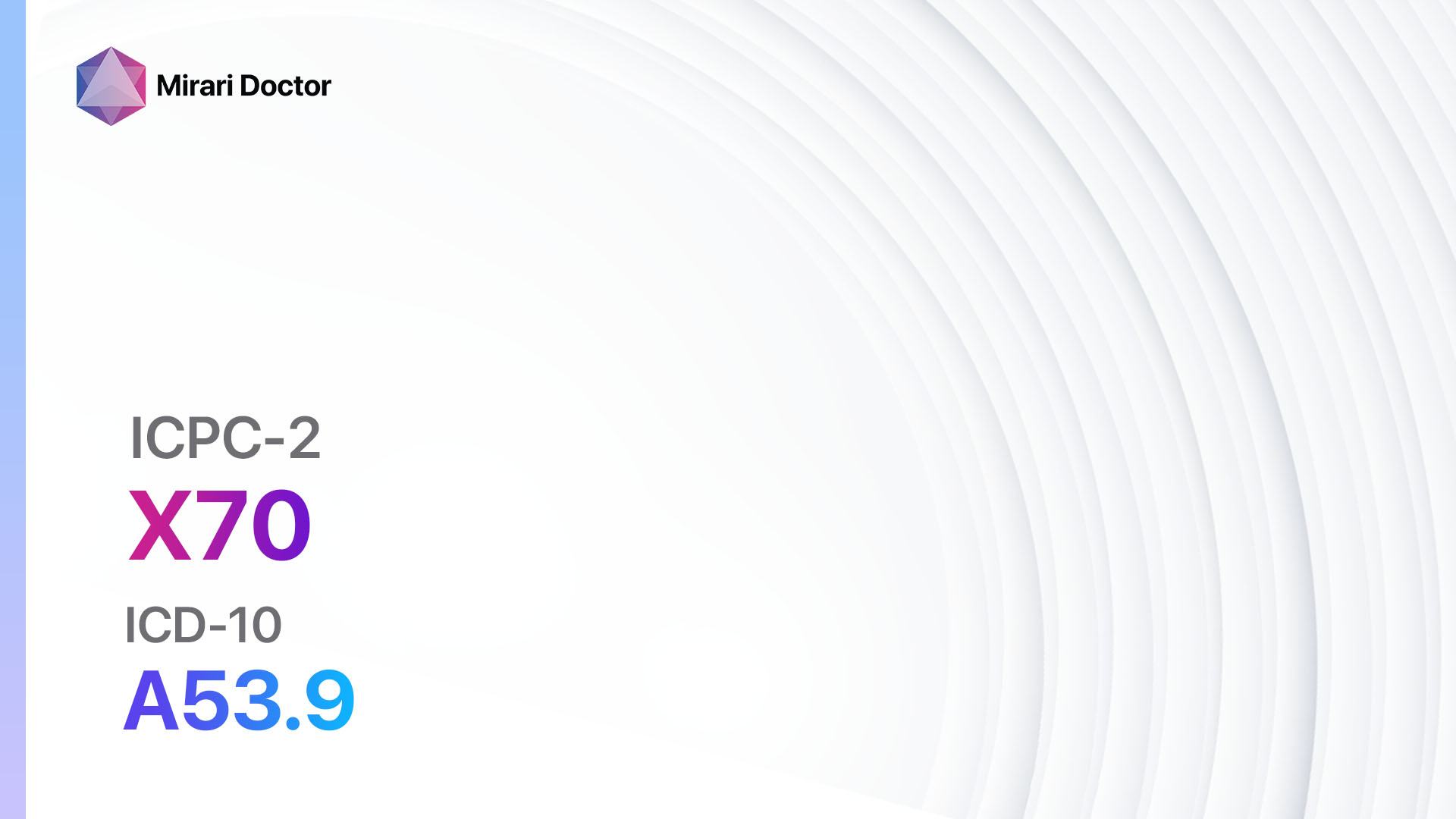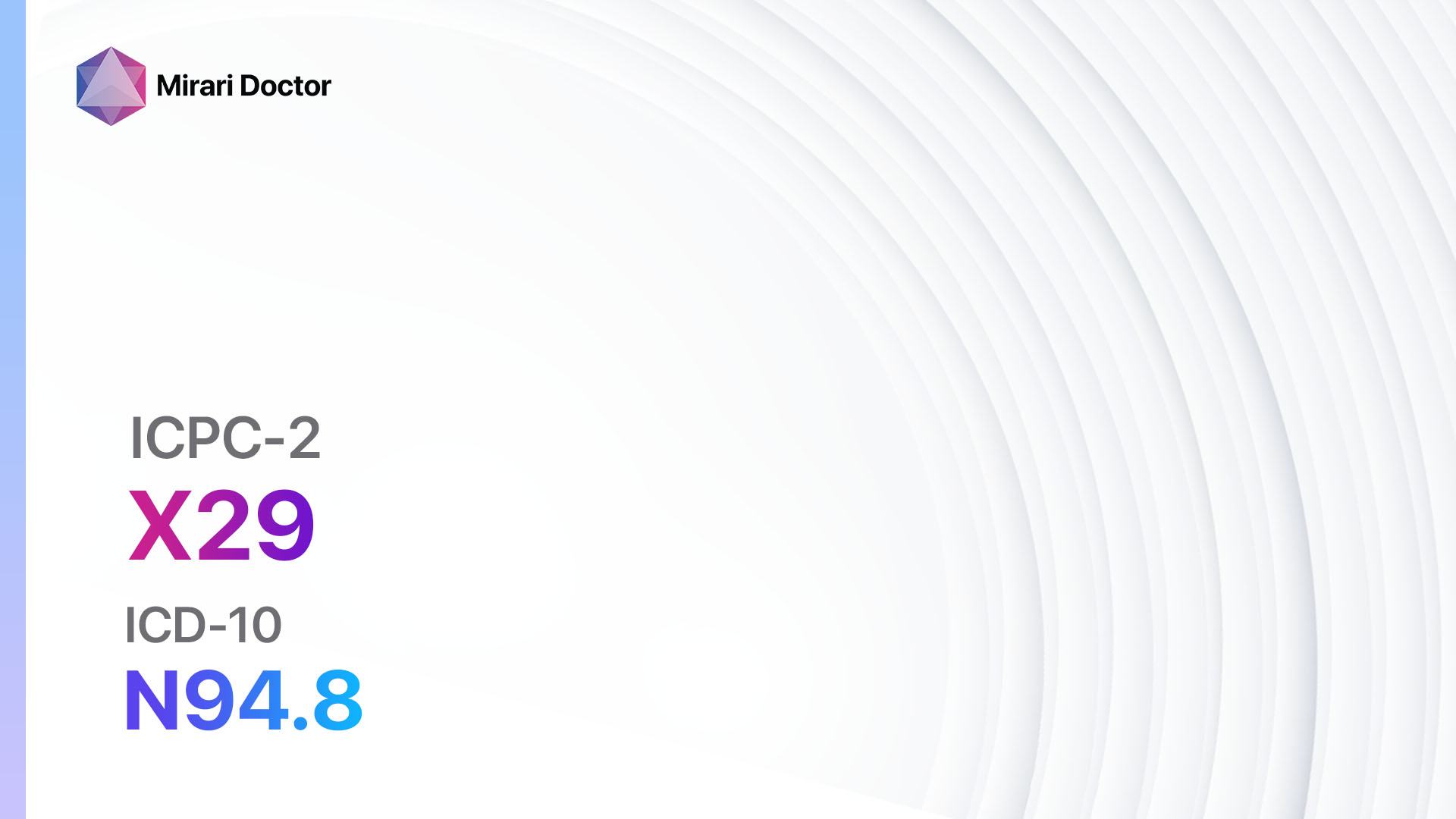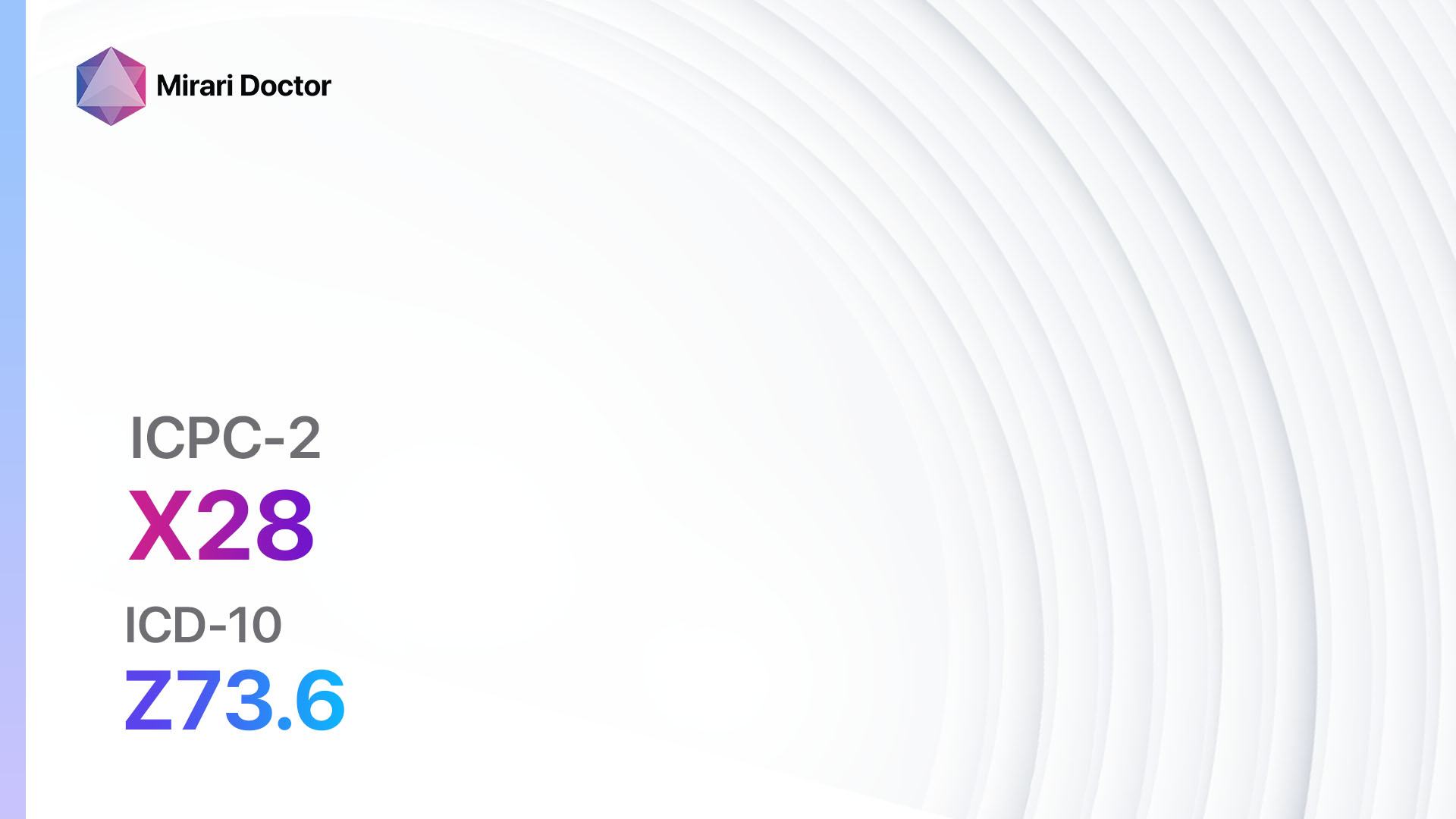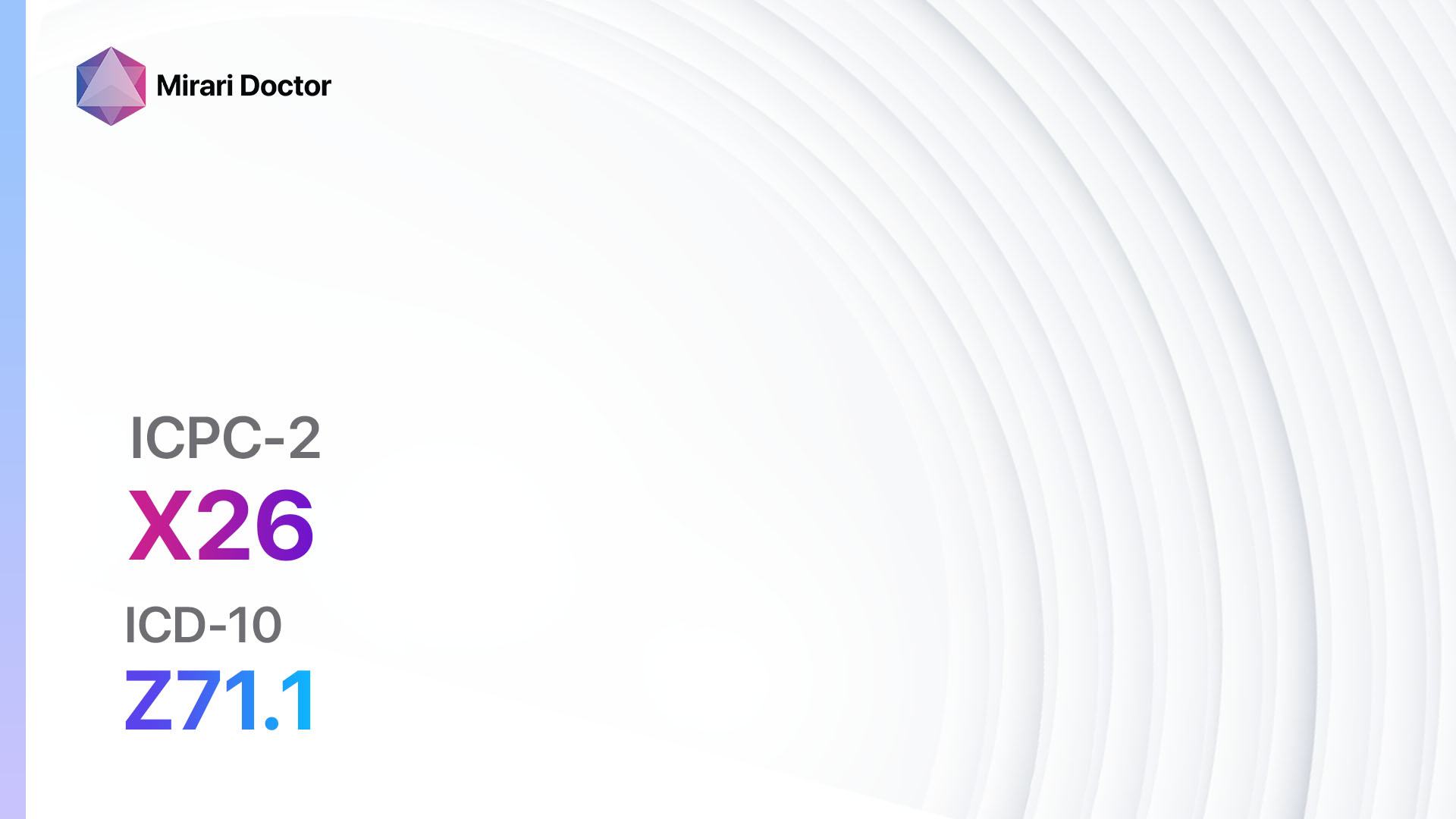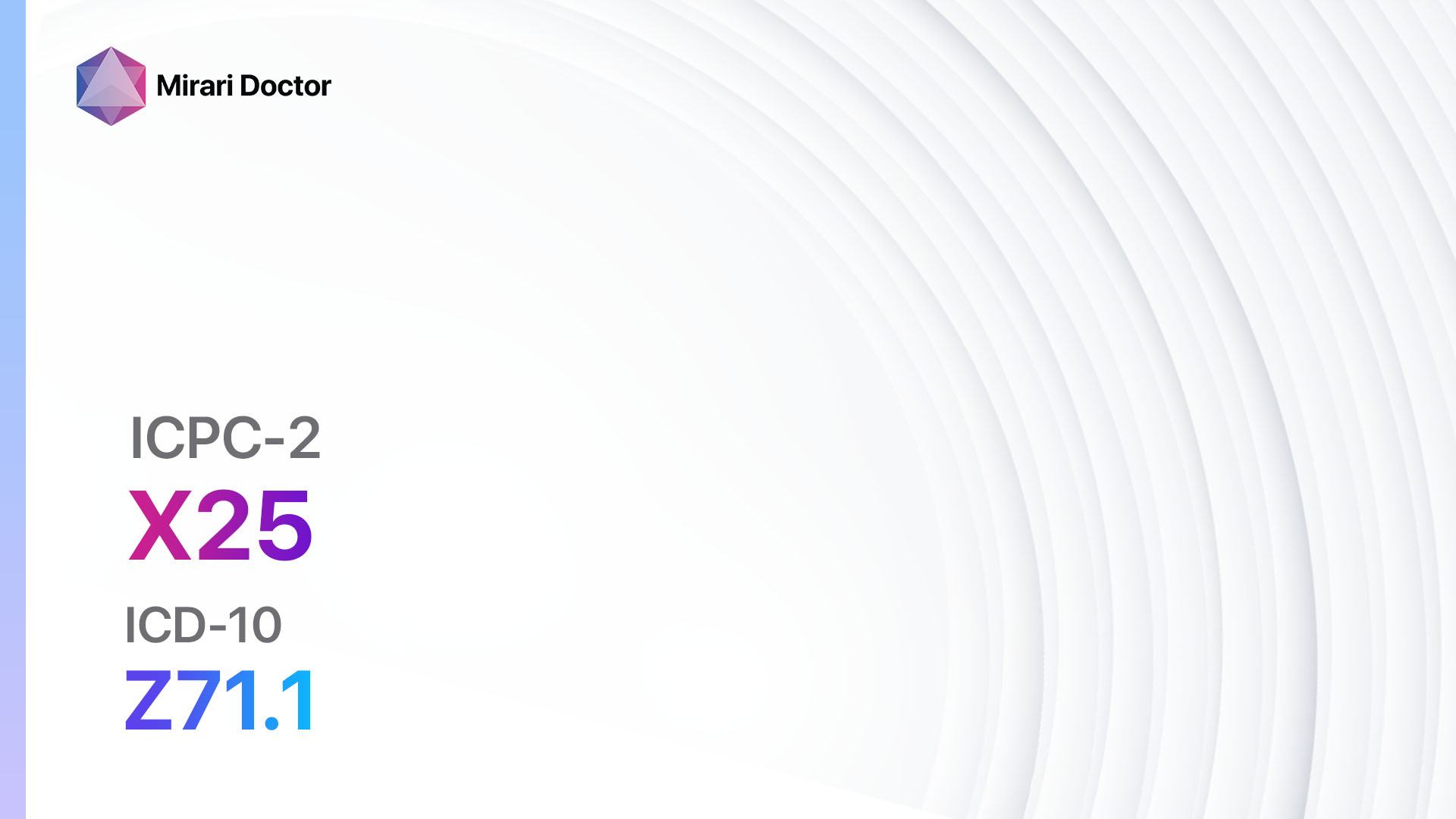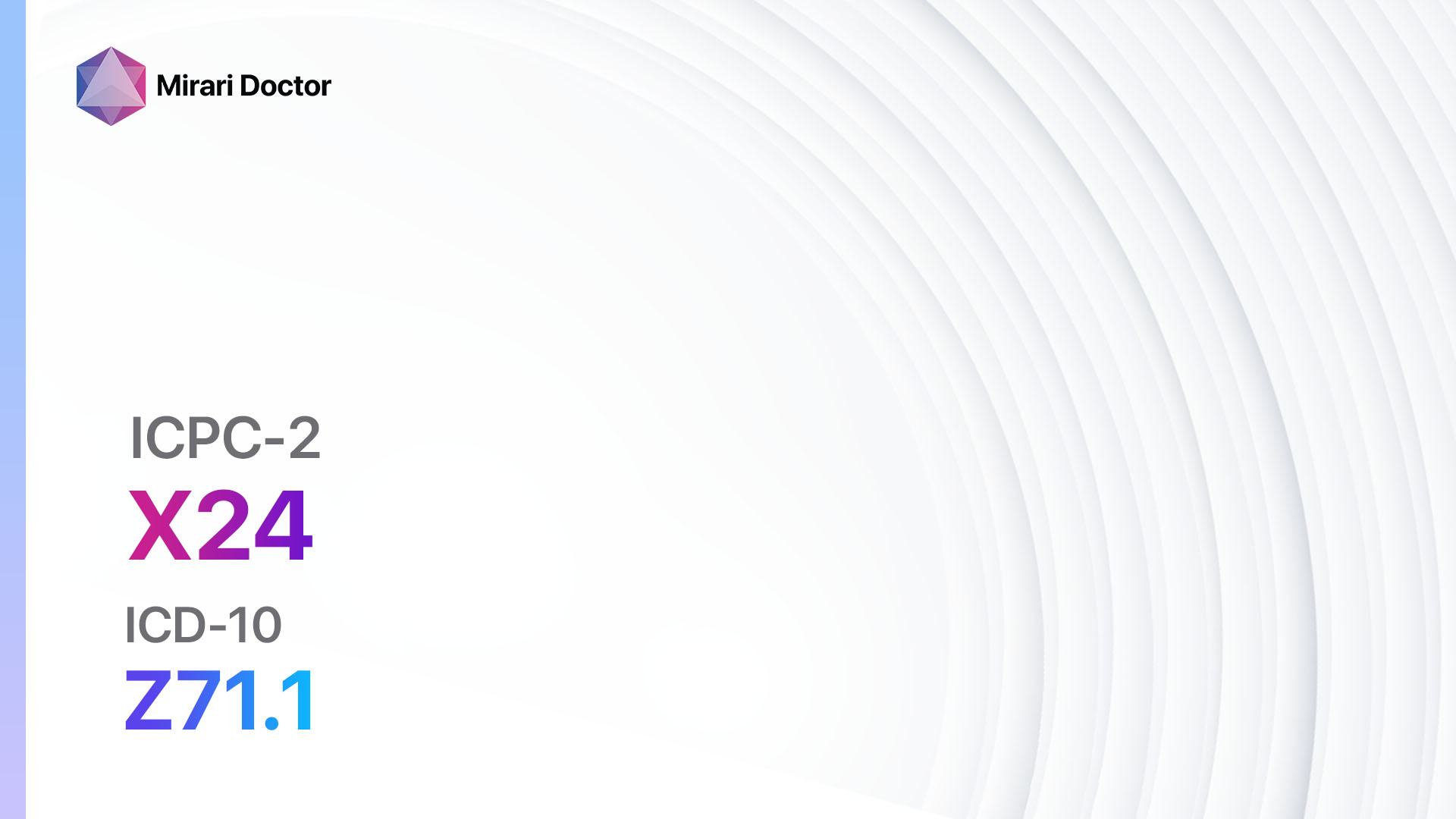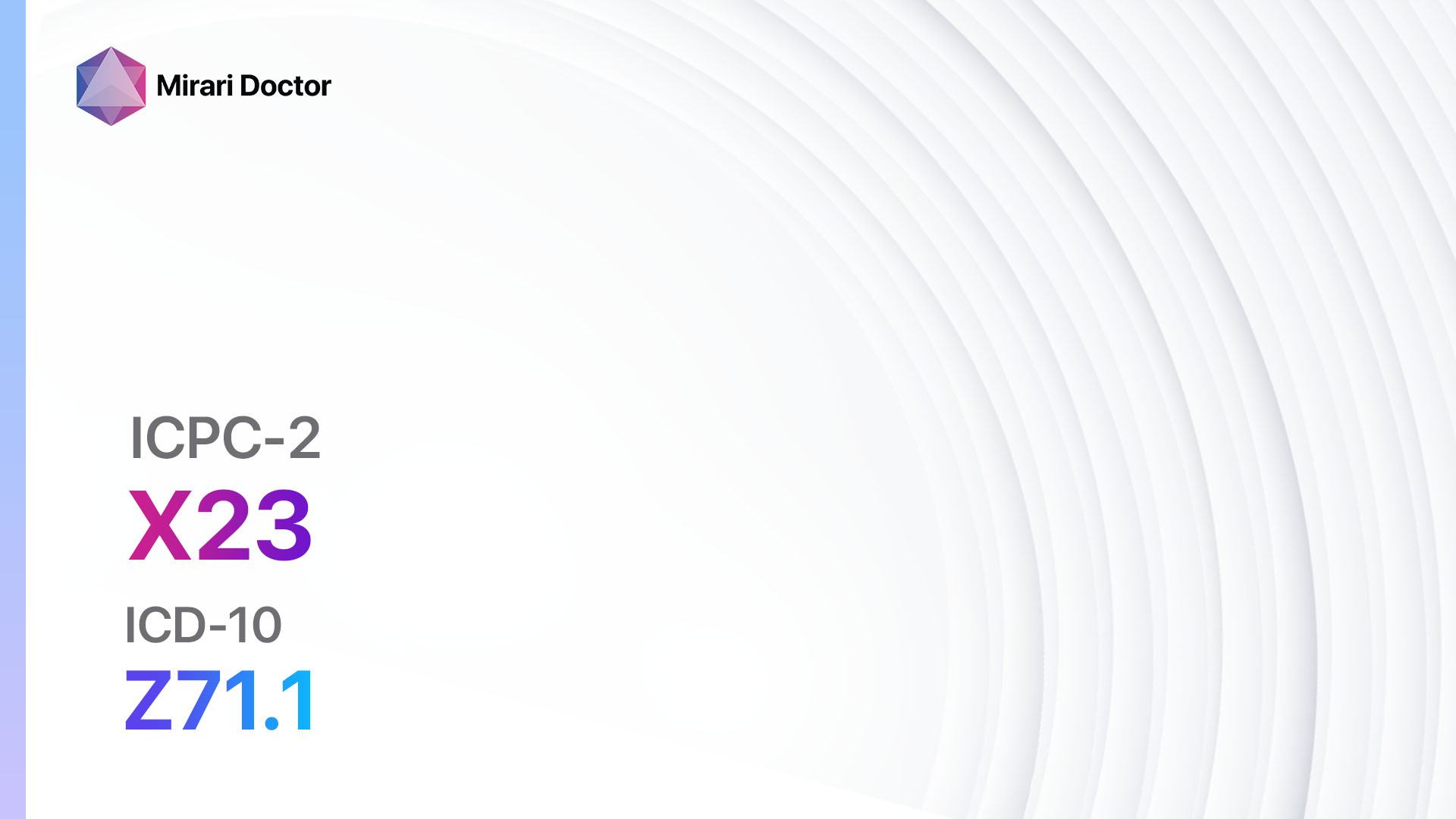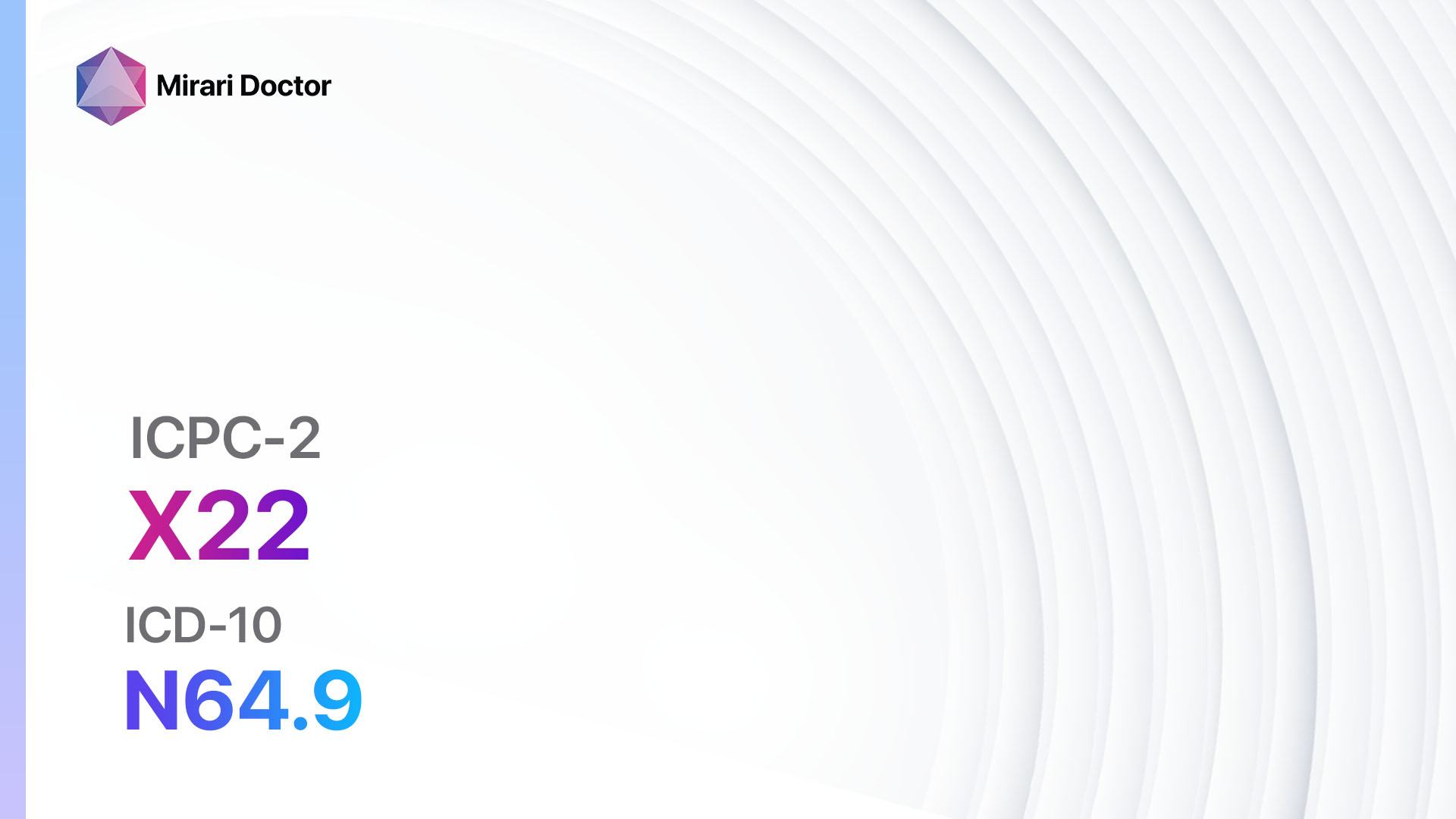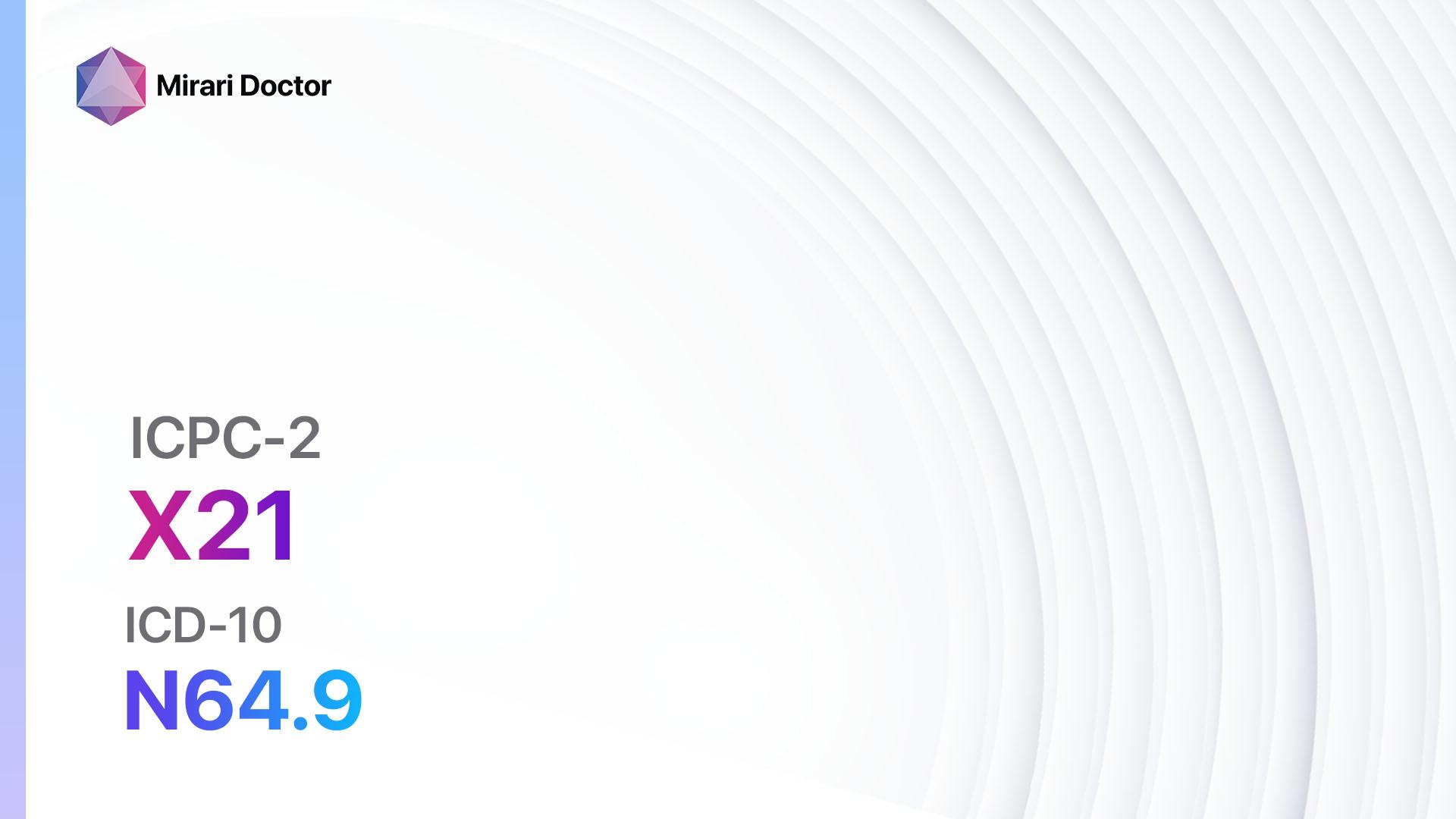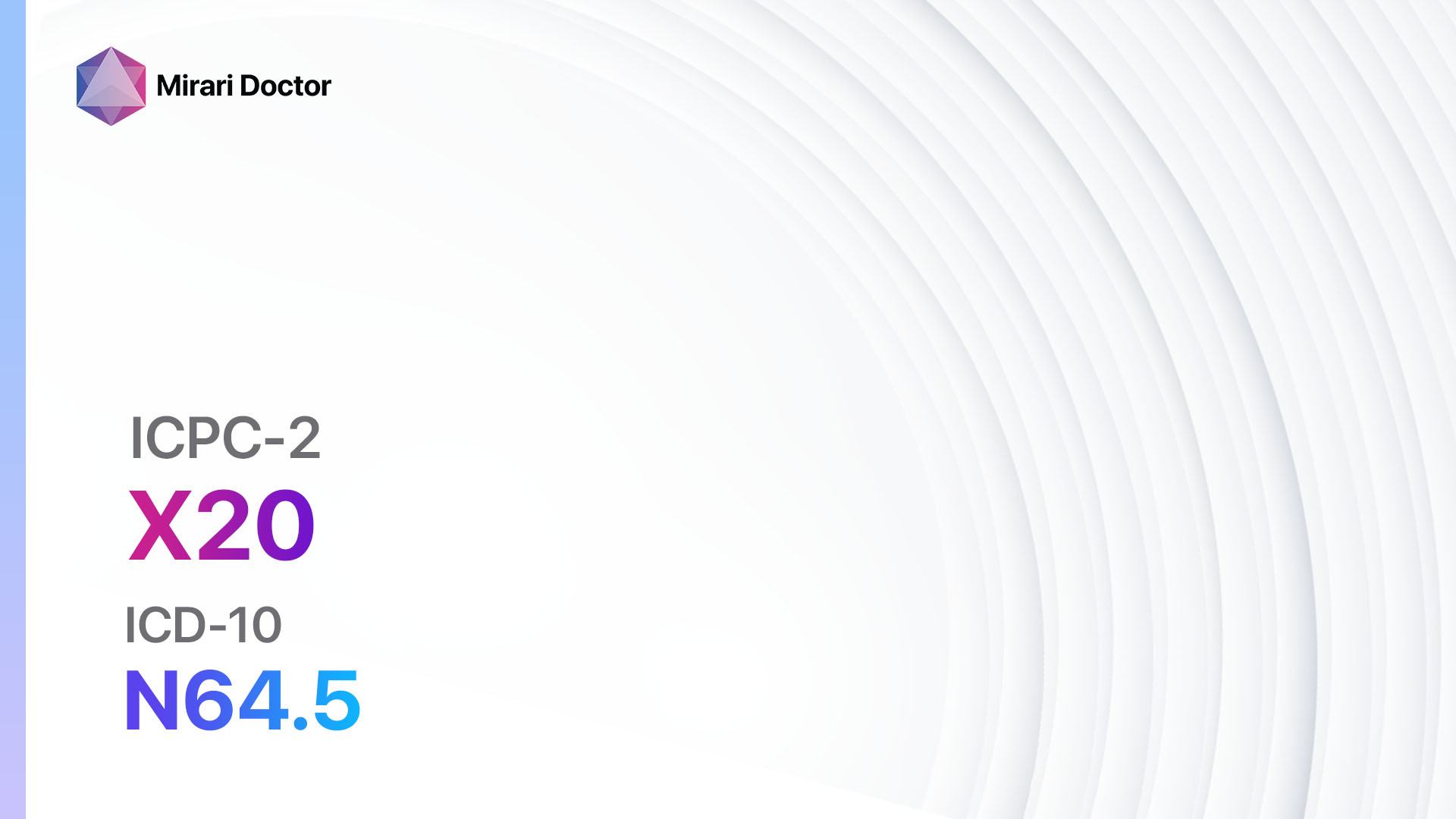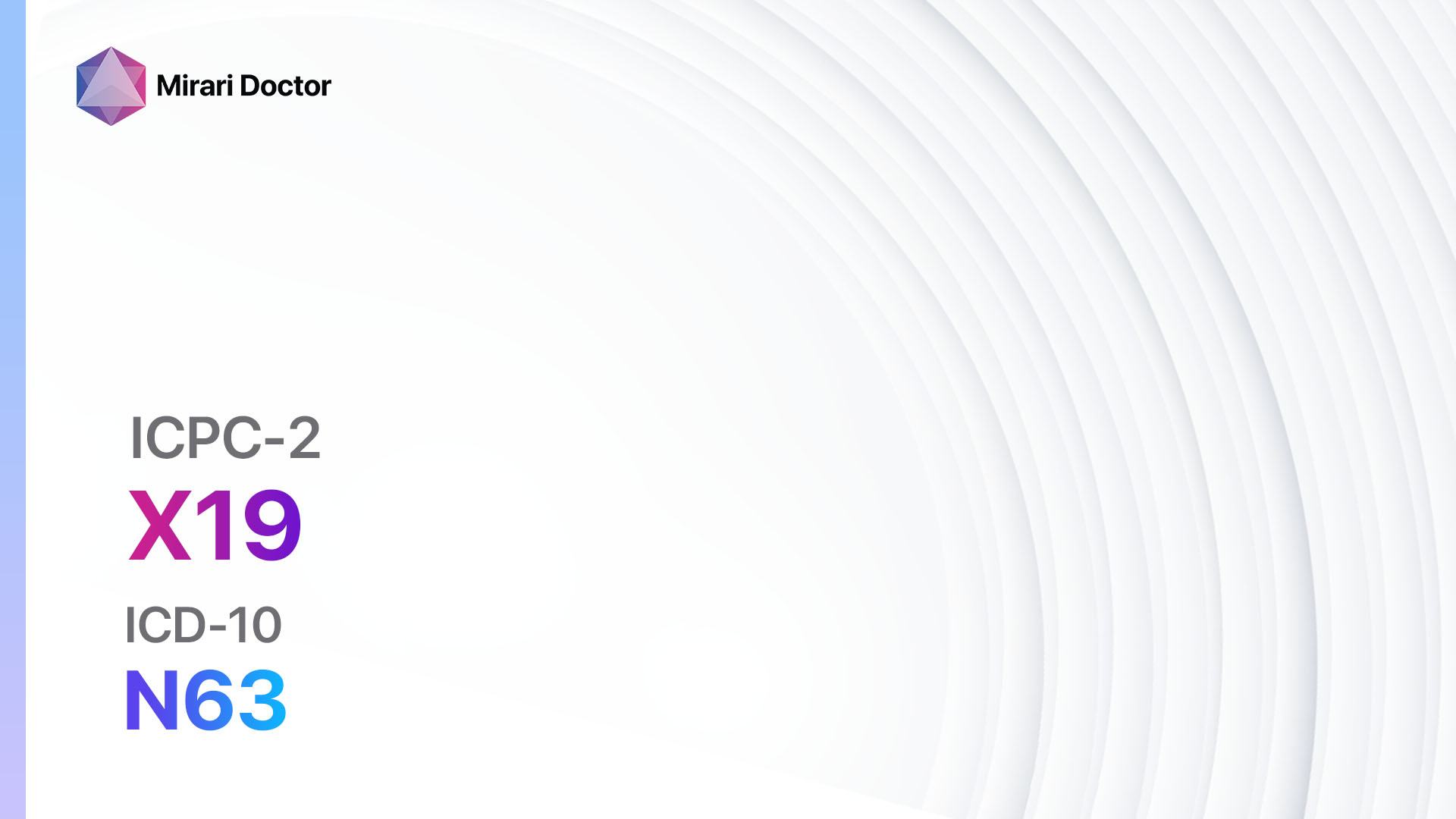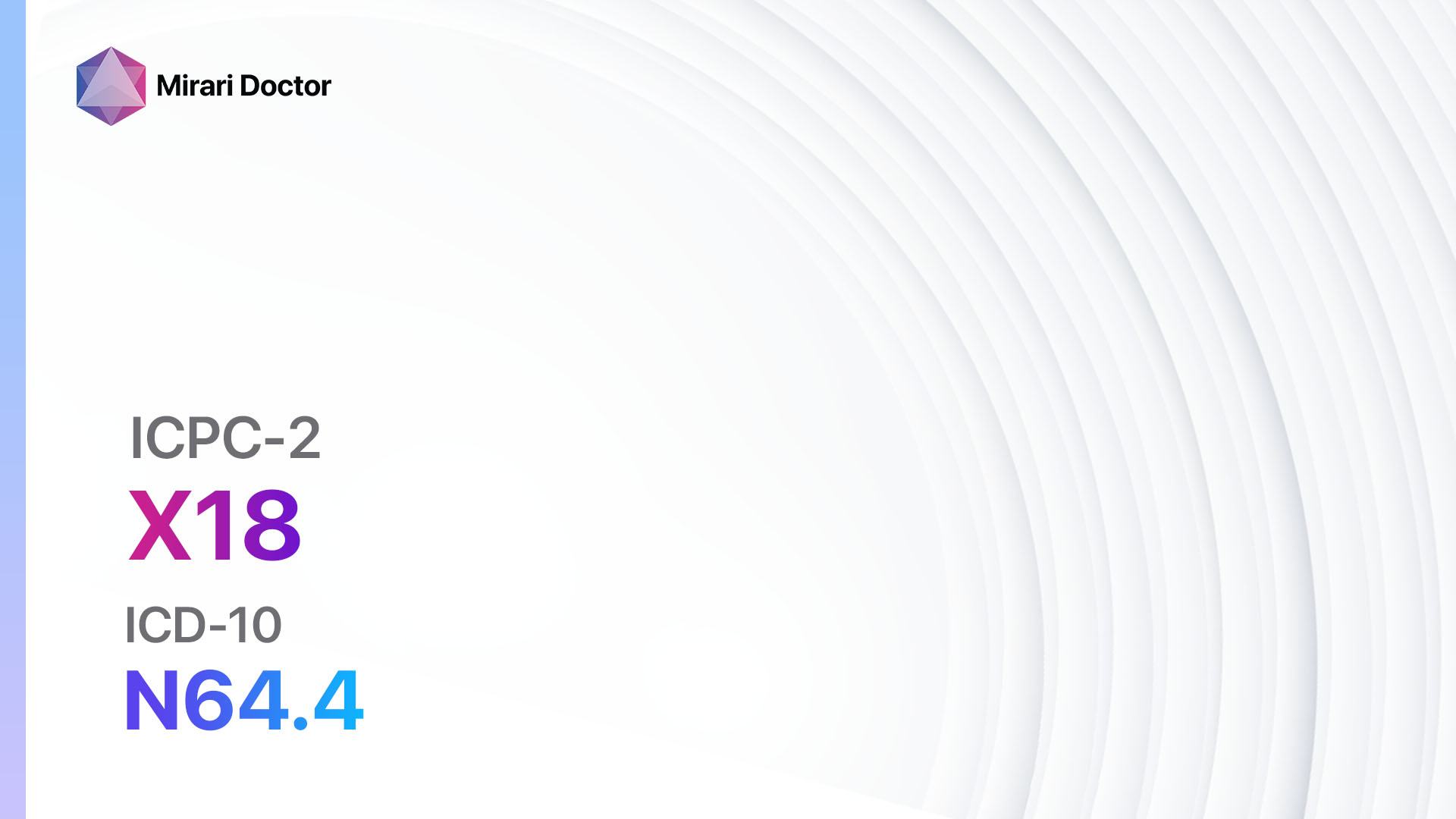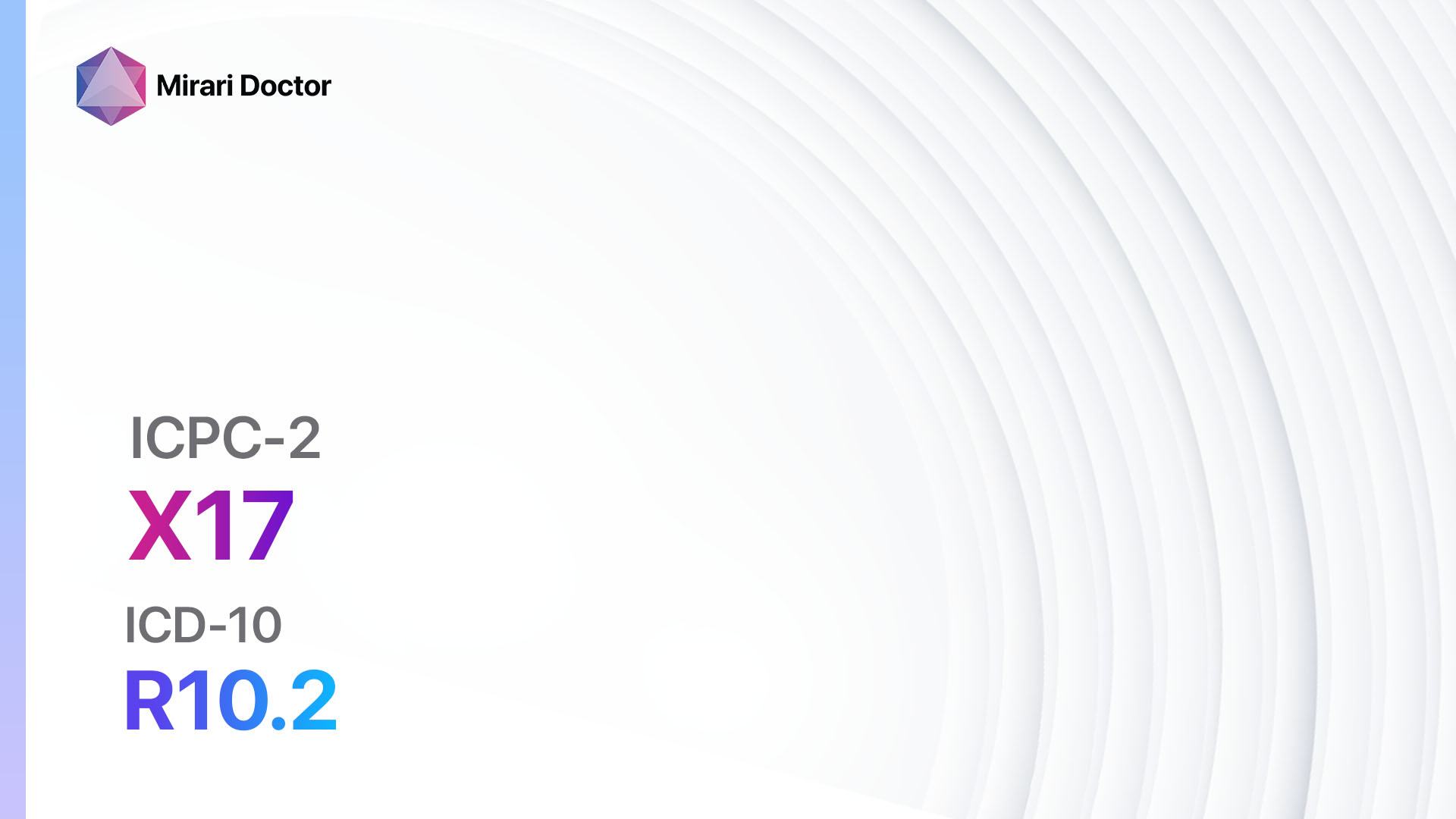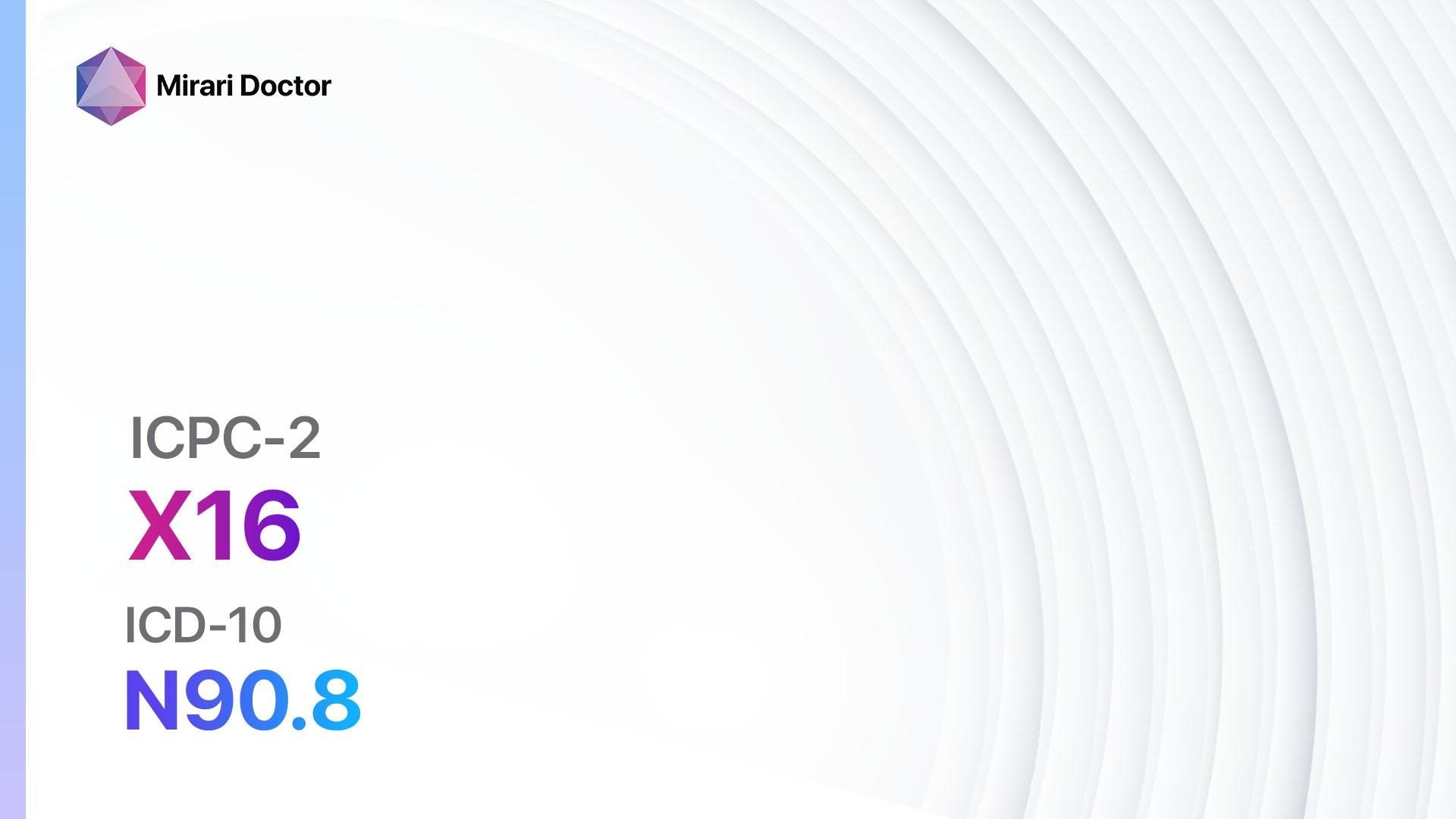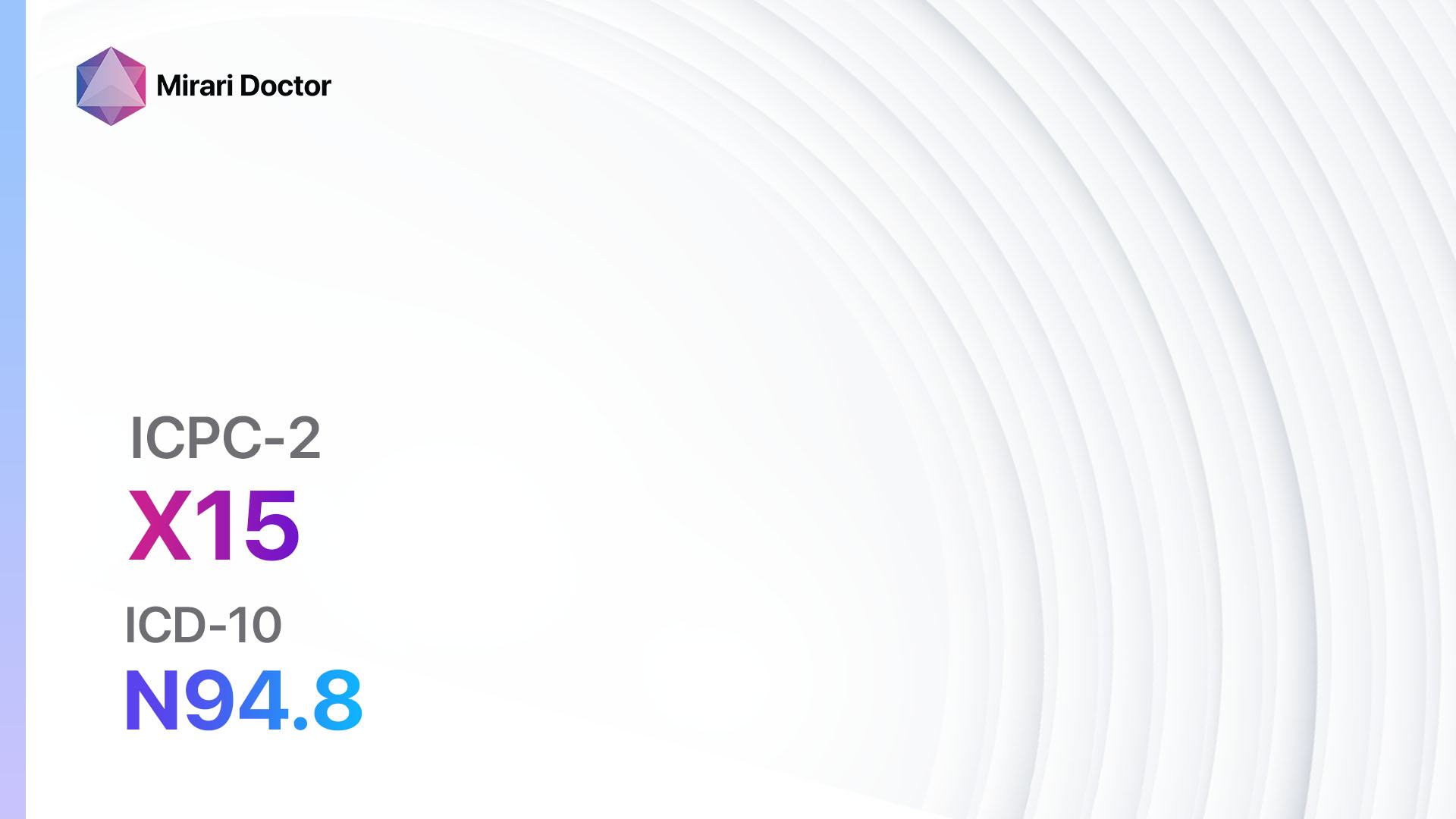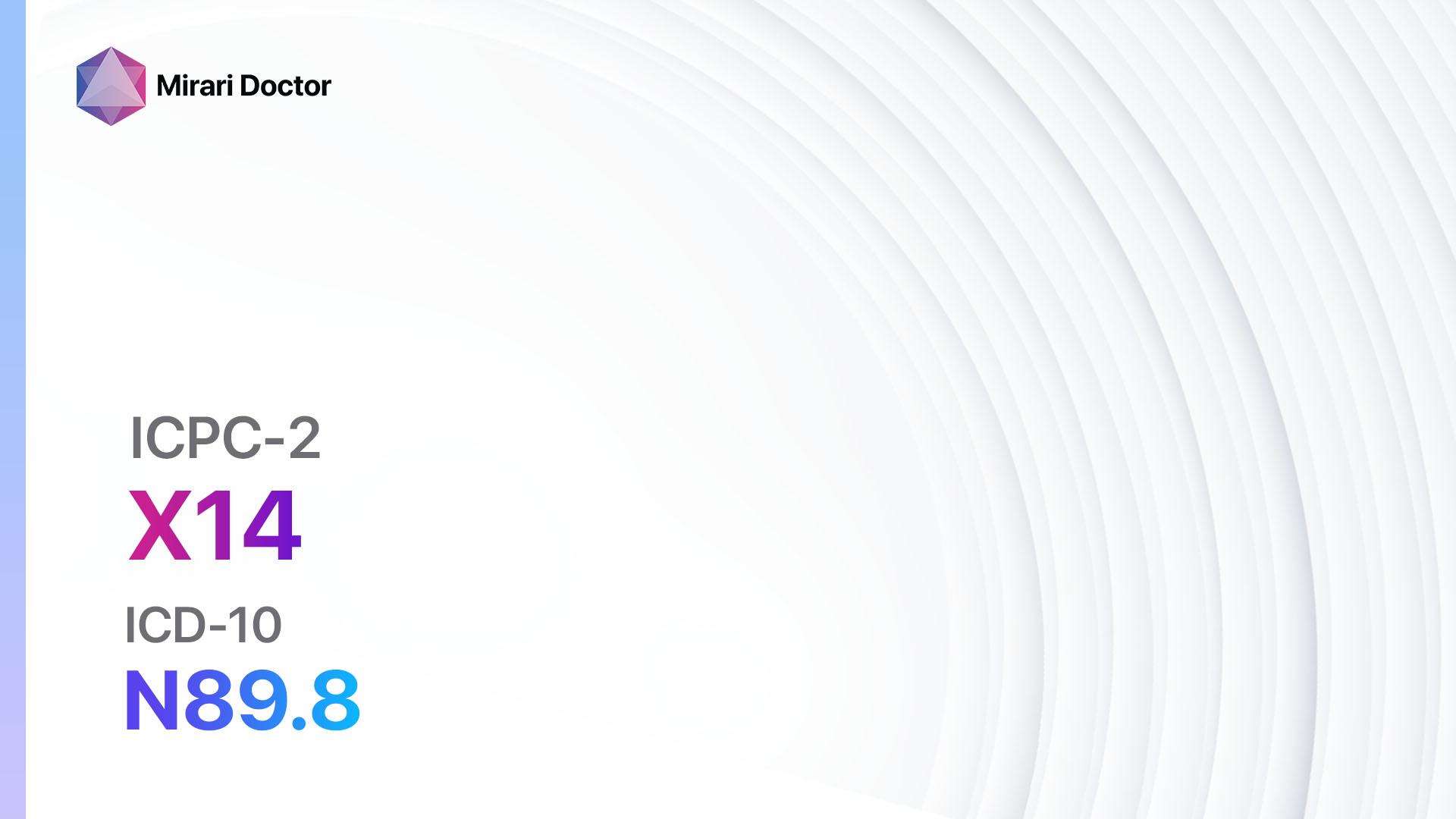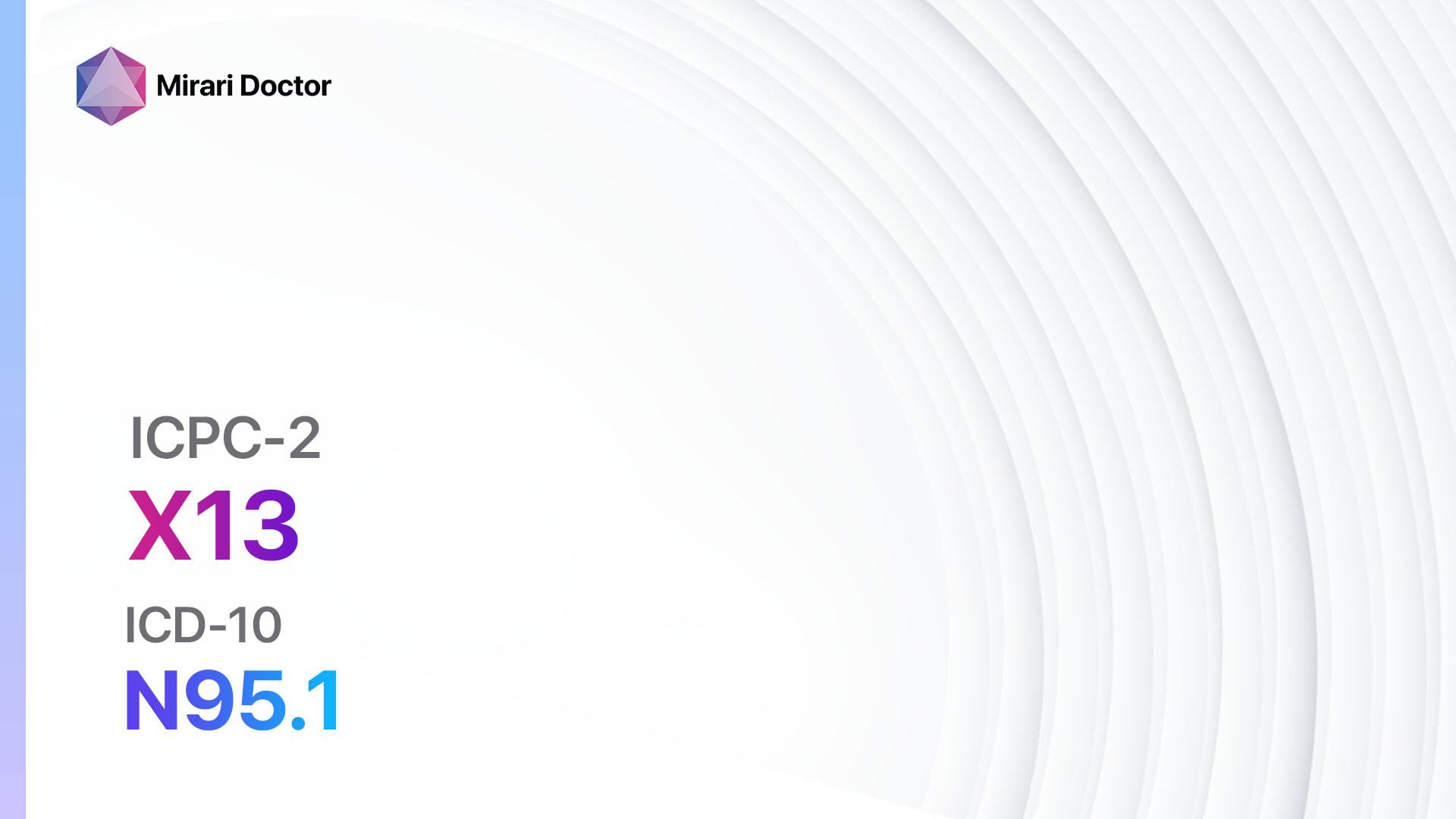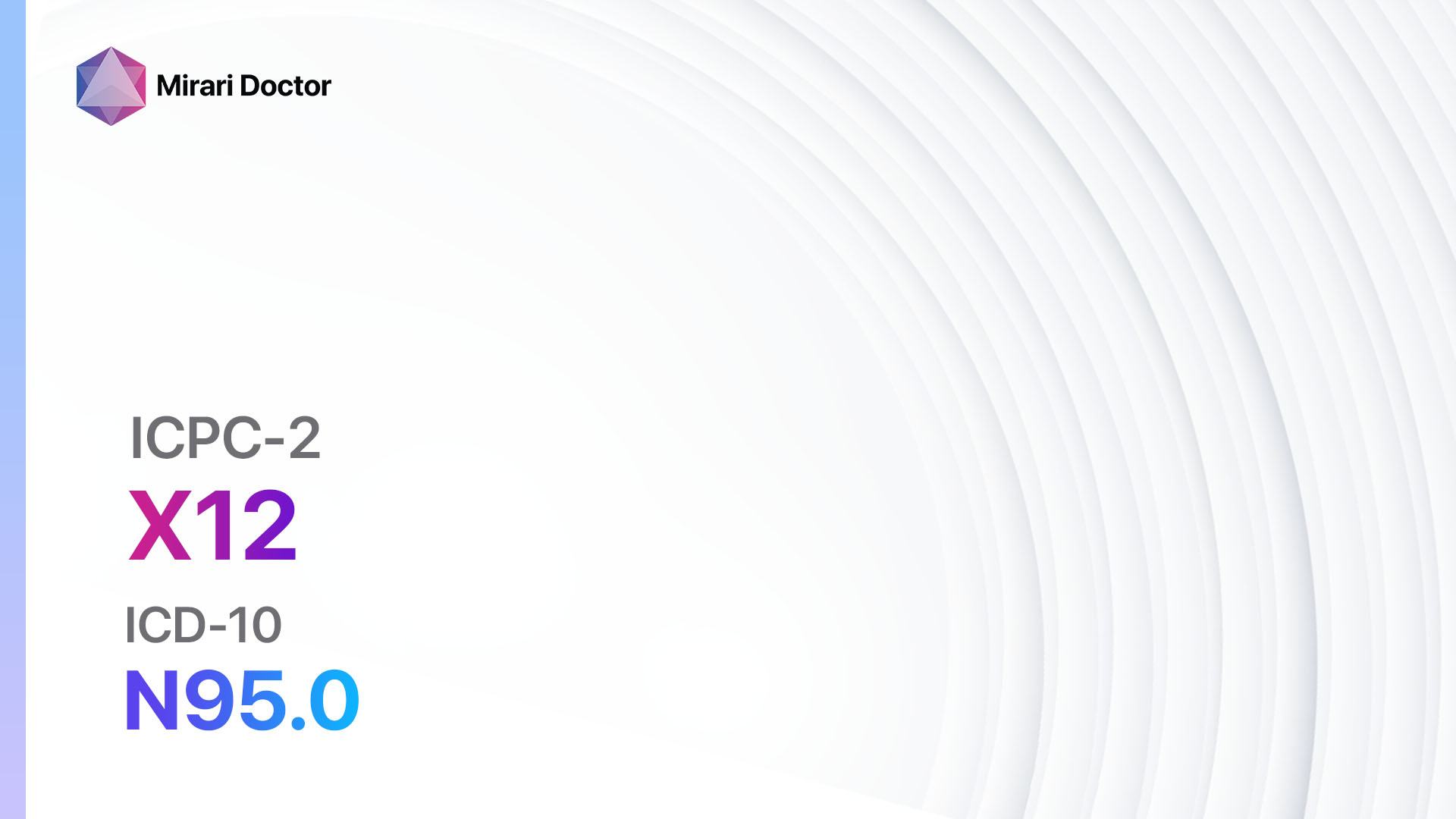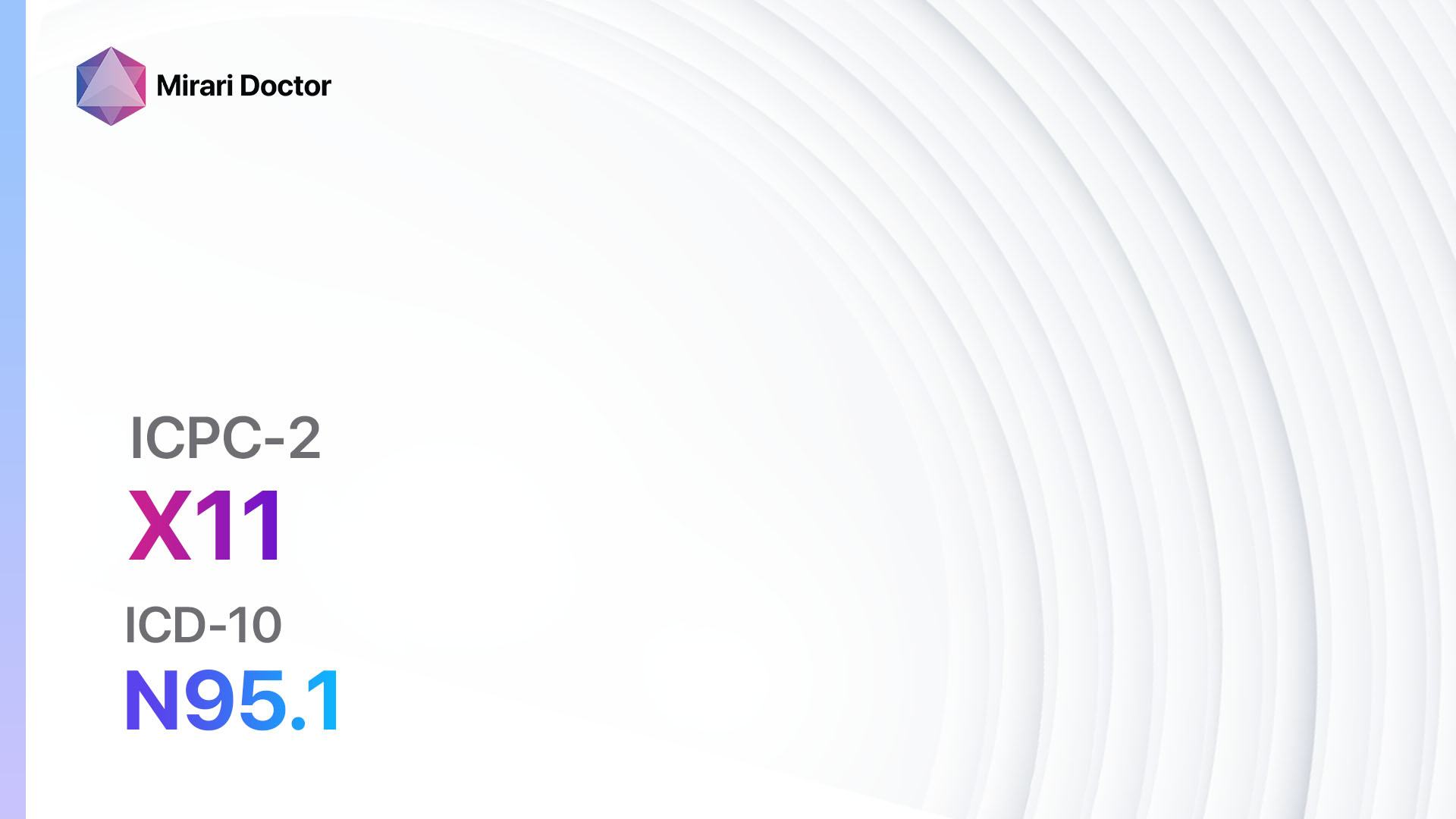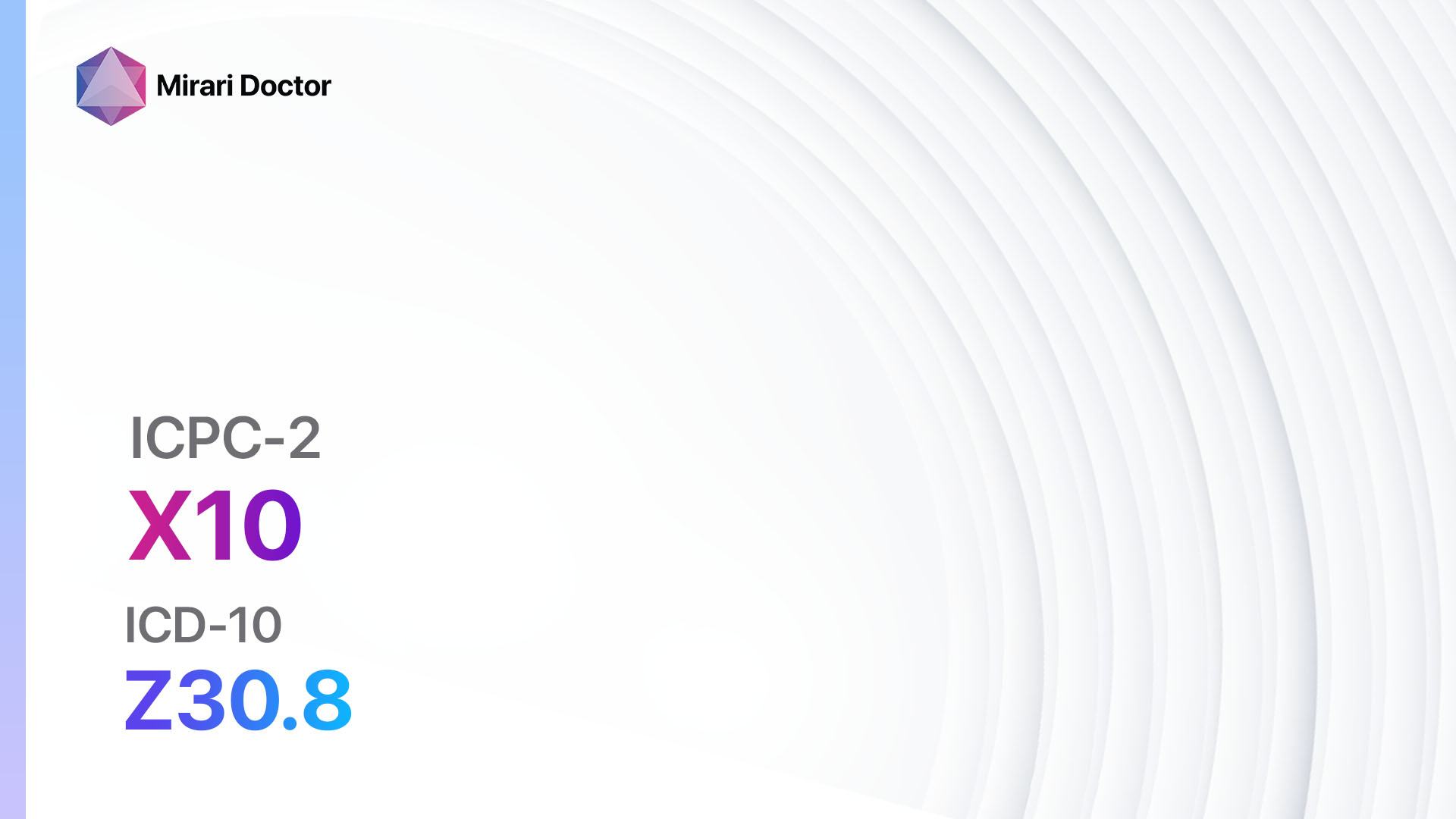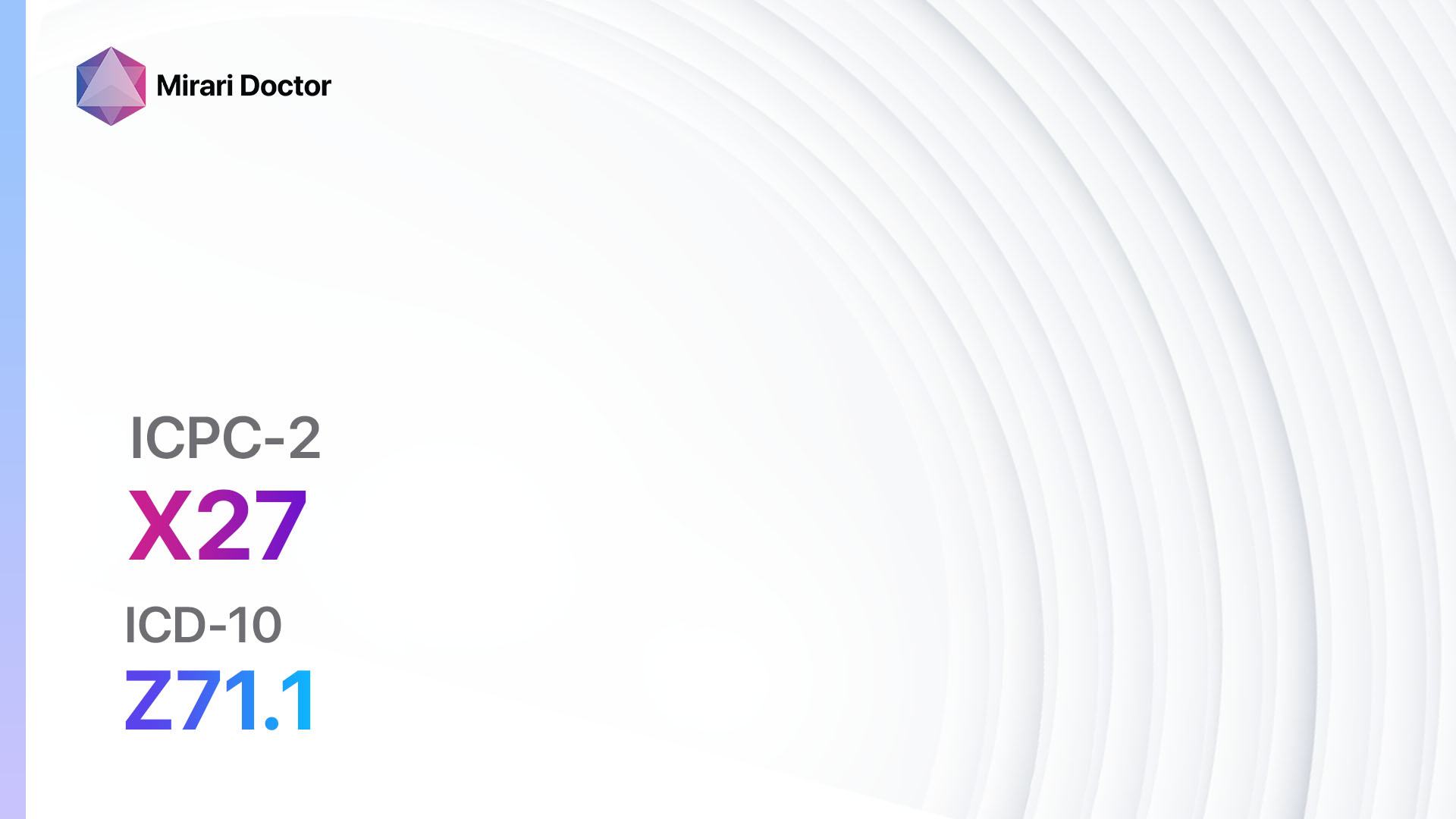
id=”ref1″
Introduction
Fear of genital/breast disease is a common concern among individuals, especially women.[1] This fear can stem from various factors, including family history, personal experiences, or general anxiety about health.[2] It is important to address these fears and provide appropriate guidance and support to alleviate anxiety and ensure early detection and treatment of any potential diseases.[3] The aim of this guide is to provide a comprehensive overview of the diagnostic steps, possible interventions, and lifestyle modifications that can help individuals overcome their fear of genital/breast disease and maintain optimal health.
Codes
- ICPC-2 Code: X27 Fear genital/breast disease female other[4]
- ICD-10 Code: Z71.1 Person with feared complaint in whom no diagnosis is made[5]
Symptoms
- Lump or mass in the breast or genital area[6]
- Changes in breast or genital skin texture or appearance[7]
- Pain or discomfort in the breast or genital area[8]
- Abnormal discharge from the breast or genital area[9]
- Changes in breast or genital size or shape[10]
It is important to note that these symptoms can vary depending on the specific disease or condition. It is recommended to consult a healthcare professional for a proper diagnosis and evaluation.
Causes
- Family history of breast or genital diseases
- Previous personal history of breast or genital diseases
- Hormonal imbalances
- Exposure to certain environmental factors or toxins
- Age (risk increases with age)
It is important to note that fear of genital/breast disease can be caused by a combination of these factors or may be unrelated to any specific cause. Proper evaluation and diagnosis are necessary to determine the underlying cause and provide appropriate treatment.
Diagnostic Steps
Medical History
- Gather information about the patient’s personal and family medical history, including any previous breast or genital diseases.
- Assess the patient’s risk factors, such as age, hormonal imbalances, or exposure to environmental factors.
- Inquire about the patient’s symptoms, including the duration, severity, and any associated factors.
Physical Examination
- Perform a thorough physical examination of the breast and genital area.
- Look for any lumps, masses, or changes in skin texture or appearance.
- Palpate the breast and genital area to assess for any abnormalities or tenderness.
Laboratory Tests
- Breast cancer screening: Mammogram, breast ultrasound, or breast MRI may be recommended based on the patient’s age and risk factors.
- Genital disease screening: Pap smear, HPV testing, or other specialized tests may be recommended based on the patient’s age and risk factors.
Diagnostic Imaging
- Breast imaging: Mammogram, breast ultrasound, or breast MRI may be recommended to further evaluate any abnormalities detected during the physical examination or screening tests.
- Genital imaging: Transvaginal ultrasound or other imaging modalities may be recommended to further evaluate any abnormalities detected during the physical examination or screening tests.
Other Tests
- Biopsy: A tissue sample may be taken from the breast or genital area for further evaluation under a microscope.
- Genetic testing: In cases where there is a strong family history of breast or genital diseases, genetic testing may be recommended to assess the patient’s risk.
Follow-up and Patient Education
- Provide the patient with a clear explanation of the diagnostic findings and their implications.
- Discuss the recommended treatment options and their potential benefits and risks.
- Address any concerns or fears the patient may have and provide emotional support.
- Emphasize the importance of regular screenings and self-examinations for early detection and prevention of genital/breast diseases.
- Provide educational resources and referrals to support groups or counseling services, if needed.
Possible Interventions
Traditional Interventions
Medications:
Top 5 drugs for Fear genital/breast disease other:
- Selective Estrogen Receptor Modulators (SERMs) (e.g., Tamoxifen, Raloxifene):
- Cost : Tamoxifen – $20-$100/month, Raloxifene – $50-$200/month.
- Contraindications : History of blood clots, pregnancy, or breastfeeding.
- Side effects : Hot flashes, vaginal dryness, increased risk of blood clots.
- Severe side effects : Increased risk of uterine cancer, stroke.
- Drug interactions: Antidepressants, blood thinners.
- Warning : Regular monitoring of liver function and bone density required.
- Aromatase Inhibitors (e.g., Anastrozole, Letrozole):
- Cost : $100-$500/month.
- Contraindications : Pregnancy, breastfeeding.
- Side effects : Joint pain, hot flashes, increased risk of osteoporosis.
- Severe side effects : Increased risk of heart disease, bone fractures.
- Drug interactions: Estrogen-containing medications.
- Warning : Regular monitoring of bone density required.
- Antiviral Medications (e.g., Acyclovir, Valacyclovir):
- Cost : $20-$100/month.
- Contraindications : Allergy to the medication.
- Side effects : Nausea, headache, dizziness.
- Severe side effects : Allergic reactions, kidney problems.
- Drug interactions: Other antiviral medications.
- Warning : Take as prescribed to prevent outbreaks and reduce transmission.
- Antifungal Medications (e.g., Fluconazole, Clotrimazole):
- Cost : $10-$50/month.
- Contraindications : Allergy to the medication.
- Side effects : Nausea, abdominal pain, rash.
- Severe side effects : Severe allergic reactions, liver problems.
- Drug interactions: Other antifungal medications.
- Warning : Complete the full course of treatment to prevent recurrence.
- Antibiotics (e.g., Amoxicillin, Ciprofloxacin):
- Cost : $10-$50/month.
- Contraindications : Allergy to the medication.
- Side effects : Nausea, diarrhea, rash.
- Severe side effects : Severe allergic reactions, tendon rupture.
- Drug interactions: Other antibiotics, antacids.
- Warning : Take as prescribed and complete the full course of treatment to prevent antibiotic resistance.
Alternative Drugs :
- Herbal Supplements (e.g., Black cohosh, Dong quai): Some herbal supplements may have potential benefits for hormonal balance and symptom relief. Cost: Varies depending on the specific supplement.
- Vitamin D and Calcium Supplements: May be recommended to support bone health. Cost: Varies depending on the specific supplement.
- Antioxidant Supplements (e.g., Vitamin C, Vitamin E): May have potential benefits for overall health and immune function. Cost: Varies depending on the specific supplement.
Surgical Procedures:
- Biopsy: A surgical procedure to remove a tissue sample for further evaluation under a microscope.
- Lumpectomy: Surgical removal of a breast lump or tumor while preserving the breast.
- Mastectomy: Surgical removal of the entire breast.
- Hysterectomy: Surgical removal of the uterus.
- Oophorectomy: Surgical removal of the ovaries.
Alternative Interventions
- Mind-body techniques: Meditation, yoga, or relaxation exercises may help reduce anxiety and promote overall well-being. Cost: Varies depending on the specific program or class.
- Support groups or counseling: Joining a support group or seeking counseling can provide emotional support and help individuals cope with their fears. Cost: Varies depending on the specific program or therapist.
- Acupuncture: May help reduce anxiety and promote relaxation. Cost: $60-$120 per session.
- Massage therapy: Can help reduce stress and promote relaxation. Cost: $50-$100 per session.
- Herbal supplements: Some herbs, such as black cohosh or dong quai, may have potential benefits for hormonal balance and symptom relief. Cost: Varies depending on the specific supplement.
Lifestyle Interventions
- Regular exercise: Engaging in regular physical activity can help reduce the risk of breast and genital diseases and improve overall health. Cost: Varies depending on the specific activity or gym membership.
- Healthy diet: Consuming a balanced diet rich in fruits, vegetables, whole grains, and lean proteins can support overall health and reduce the risk of disease. Cost: Varies depending on individual food choices and dietary preferences.
- Stress management: Practicing stress management techniques, such as deep breathing exercises or mindfulness, can help reduce anxiety and promote overall well-being. Cost: Varies depending on the specific program or class.
- Smoking cessation: Quitting smoking can significantly reduce the risk of various diseases, including breast and genital diseases. Cost: Varies depending on the specific smoking cessation program or aids.
- Regular screenings and self-examinations: Encourage individuals to perform regular self-examinations and adhere to recommended screening guidelines for early detection and prevention of genital/breast diseases. Cost: Varies depending on the specific screening tests and healthcare provider.
It is important to note that the cost ranges provided are approximate and may vary depending on the location and availability of the interventions. It is recommended to consult with healthcare professionals or insurance providers for accurate cost information.
Mirari Cold Plasma Alternative Intervention
Understanding Mirari Cold Plasma
- Safe and Non-Invasive Treatment: Mirari Cold Plasma is a safe and non-invasive treatment option for various skin conditions. It does not require incisions, minimizing the risk of scarring, bleeding, or tissue damage.
- Efficient Extraction of Foreign Bodies: Mirari Cold Plasma facilitates the removal of foreign bodies from the skin by degrading and dissociating organic matter, allowing easier access and extraction.
- Pain Reduction and Comfort: Mirari Cold Plasma has a local analgesic effect, providing pain relief during the treatment, making it more comfortable for the patient.
- Reduced Risk of Infection: Mirari Cold Plasma has antimicrobial properties, effectively killing bacteria and reducing the risk of infection.
- Accelerated Healing and Minimal Scarring: Mirari Cold Plasma stimulates wound healing and tissue regeneration, reducing healing time and minimizing the formation of scars.
Mirari Cold Plasma Prescription
Video instructions for using Mirari Cold Plasma Device – X27 Fear genital/breast disease female other (ICD-10:Z71.1)
| Mild | Moderate | Severe |
| Mode setting: 1 (Infection) Location: 0 (Localized) Morning: 15 minutes, Evening: 15 minutes |
Mode setting: 1 (Infection) Location: 0 (Localized) Morning: 30 minutes, Lunch: 30 minutes, Evening: 30 minutes |
Mode setting: 1 (Infection) Location: 0 (Localized) Morning: 30 minutes, Lunch: 30 minutes, Evening: 30 minutes |
| Mode setting: 2 (Wound Healing) Location: 0 (Localized) Morning: 15 minutes, Evening: 15 minutes |
Mode setting: 2 (Wound Healing) Location: 0 (Localized) Morning: 30 minutes, Lunch: 30 minutes, Evening: 30 minutes |
Mode setting: 2 (Wound Healing) Location: 0 (Localized) Morning: 30 minutes, Lunch: 30 minutes, Evening: 30 minutes |
| Mode setting: 3 (Antiviral Therapy) Location: 0 (Localized) Morning: 15 minutes, Evening: 15 minutes |
Mode setting: 3 (Antiviral Therapy) Location: 0 (Localized) Morning: 30 minutes, Lunch: 30 minutes, Evening: 30 minutes |
Mode setting: 3 (Antiviral Therapy) Location: 0 (Localized) Morning: 30 minutes, Lunch: 30 minutes, Evening: 30 minutes |
| Mode setting: 7 (Immunotherapy) Location: 1 (Sacrum) Morning: 15 minutes, Evening: 15 minutes |
Mode setting: 7 (Immunotherapy) Location: 1 (Sacrum) Morning: 30 minutes, Lunch: 30 minutes, Evening: 30 minutes |
Mode setting: 7 (Immunotherapy) Location: 1 (Sacrum) Morning: 30 minutes, Lunch: 30 minutes, Evening: 30 minutes |
| Total Morning: 60 minutes approx. $10 USD, Evening: 60 minutes approx. $10 USD |
Total Morning: 120 minutes approx. $20 USD, Lunch: 120 minutes approx. $20 USD, Evening: 120 minutes approx. $20 USD, |
Total Morning: 120 minutes approx. $20 USD, Lunch: 120 minutes approx. $20 USD, Evening: 120 minutes approx. $20 USD, |
| Usual treatment for 7-60 days approx. $140 USD – $1200 USD | Usual treatment for 6-8 weeks approx. $2,520 USD – $3,360 USD |
Usual treatment for 3-6 months approx. $5,400 USD – $10,800 USD
|
 |
|
Use the Mirari Cold Plasma device to treat Fear genital/breast disease other (f) effectively.
WARNING: MIRARI COLD PLASMA IS DESIGNED FOR THE HUMAN BODY WITHOUT ANY ARTIFICIAL OR THIRD PARTY PRODUCTS. USE OF OTHER PRODUCTS IN COMBINATION WITH MIRARI COLD PLASMA MAY CAUSE UNPREDICTABLE EFFECTS, HARM OR INJURY. PLEASE CONSULT A MEDICAL PROFESSIONAL BEFORE COMBINING ANY OTHER PRODUCTS WITH USE OF MIRARI.
Step 1: Cleanse the Skin
- Start by cleaning the affected area of the skin with a gentle cleanser or mild soap and water. Gently pat the area dry with a clean towel.
Step 2: Prepare the Mirari Cold Plasma device
- Ensure that the Mirari Cold Plasma device is fully charged or has fresh batteries as per the manufacturer’s instructions. Make sure the device is clean and in good working condition.
- Switch on the Mirari device using the power button or by following the specific instructions provided with the device.
- Some Mirari devices may have adjustable settings for intensity or treatment duration. Follow the manufacturer’s instructions to select the appropriate settings based on your needs and the recommended guidelines.
Step 3: Apply the Device
- Place the Mirari device in direct contact with the affected area of the skin. Gently glide or hold the device over the skin surface, ensuring even coverage of the area experiencing.
- Slowly move the Mirari device in a circular motion or follow a specific pattern as indicated in the user manual. This helps ensure thorough treatment coverage.
Step 4: Monitor and Assess:
- Keep track of your progress and evaluate the effectiveness of the Mirari device in managing your Fear genital/breast disease other (f). If you have any concerns or notice any adverse reactions, consult with your health care professional.
Note
This guide is for informational purposes only and should not replace the advice of a medical professional. Always consult with your healthcare provider or a qualified medical professional for personal advice, diagnosis, or treatment. Do not solely rely on the information presented here for decisions about your health. Use of this information is at your own risk. The authors of this guide, nor any associated entities or platforms, are not responsible for any potential adverse effects or outcomes based on the content.
Mirari Cold Plasma System Disclaimer
- Purpose: The Mirari Cold Plasma System is a Class 2 medical device designed for use by trained healthcare professionals. It is registered for use in Thailand and Vietnam. It is not intended for use outside of these locations.
- Informational Use: The content and information provided with the device are for educational and informational purposes only. They are not a substitute for professional medical advice or care.
- Variable Outcomes: While the device is approved for specific uses, individual outcomes can differ. We do not assert or guarantee specific medical outcomes.
- Consultation: Prior to utilizing the device or making decisions based on its content, it is essential to consult with a Certified Mirari Tele-Therapist and your medical healthcare provider regarding specific protocols.
- Liability: By using this device, users are acknowledging and accepting all potential risks. Neither the manufacturer nor the distributor will be held accountable for any adverse reactions, injuries, or damages stemming from its use.
- Geographical Availability: This device has received approval for designated purposes by the Thai and Vietnam FDA. As of now, outside of Thailand and Vietnam, the Mirari Cold Plasma System is not available for purchase or use.
References
- Meana, M., & Ricciardi, L. (2008). Achieving positive health outcomes through understanding patient fears. Journal of Public Health Policy, 29(3), 342-353.
- Consedine, N. S., Magai, C., Krivoshekova, Y. S., Ryzewicz, L., & Neugut, A. I. (2004). Fear, anxiety, worry, and breast cancer screening behavior: a critical review. Cancer Epidemiology and Prevention Biomarkers, 13(4), 501-510.
- Lerman, C., Daly, M., Sands, C., Balshem, A., Lustbader, E., Heggan, T., … & Engstrom, P. (1993). Mammography adherence and psychological distress among women at risk for breast cancer. Journal of the National Cancer Institute, 85(13), 1074-1080.
- World Health Organization. (1998). International Classification of Primary Care, Second edition (ICPC-2).
- World Health Organization. (2019). International Statistical Classification of Diseases and Related Health Problems (11th ed.).
- Barton, M. B., Elmore, J. G., & Fletcher, S. W. (1999). Breast symptoms among women enrolled in a health maintenance organization: frequency, evaluation, and outcome. Annals of internal medicine, 130(8), 651-657.
- Katz, S. J., Zemencuk, J. K., & Hofer, T. P. (2000). Breast cancer screening in the United States and Canada, 1994: socioeconomic gradients persist. American journal of public health, 90(5), 799.
- Khan, S. A., Apkarian, A. V. (2002). The characteristics of cyclical and non-cyclical mastalgia: a prospective study using a modified McGill Pain Questionnaire. Breast cancer research and treatment, 75(2), 147-157.
- Seltzer, M. H. (2004). Breast complaints, biopsies, and cancer correlated with age in 10,000 consecutive new surgical referrals. The breast journal, 10(2), 111-117.
- Boyle, P. (2003). Mammographic breast cancer screening: after the dust has settled. Breast, 12(6), 351-356.
Related articles
Made in USA


